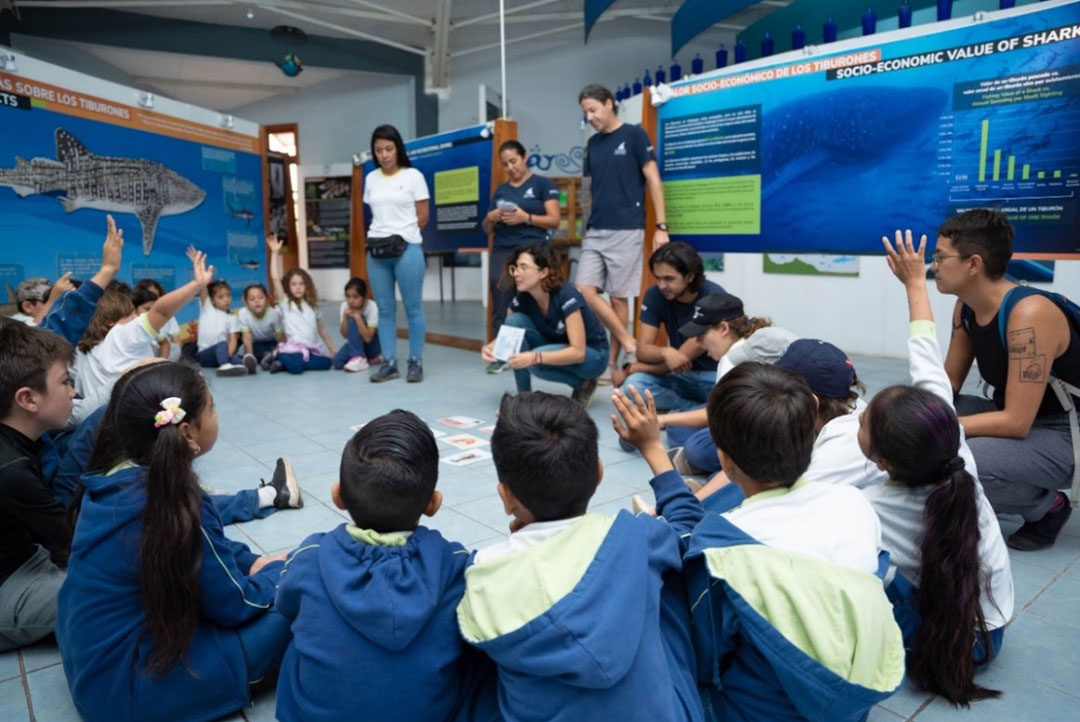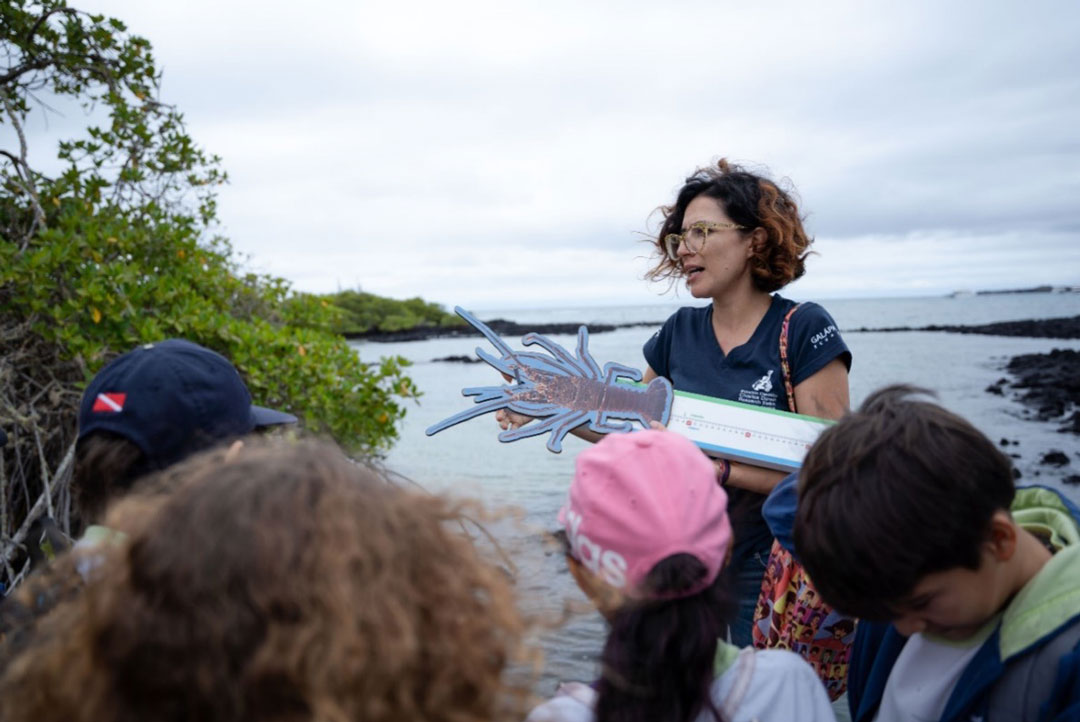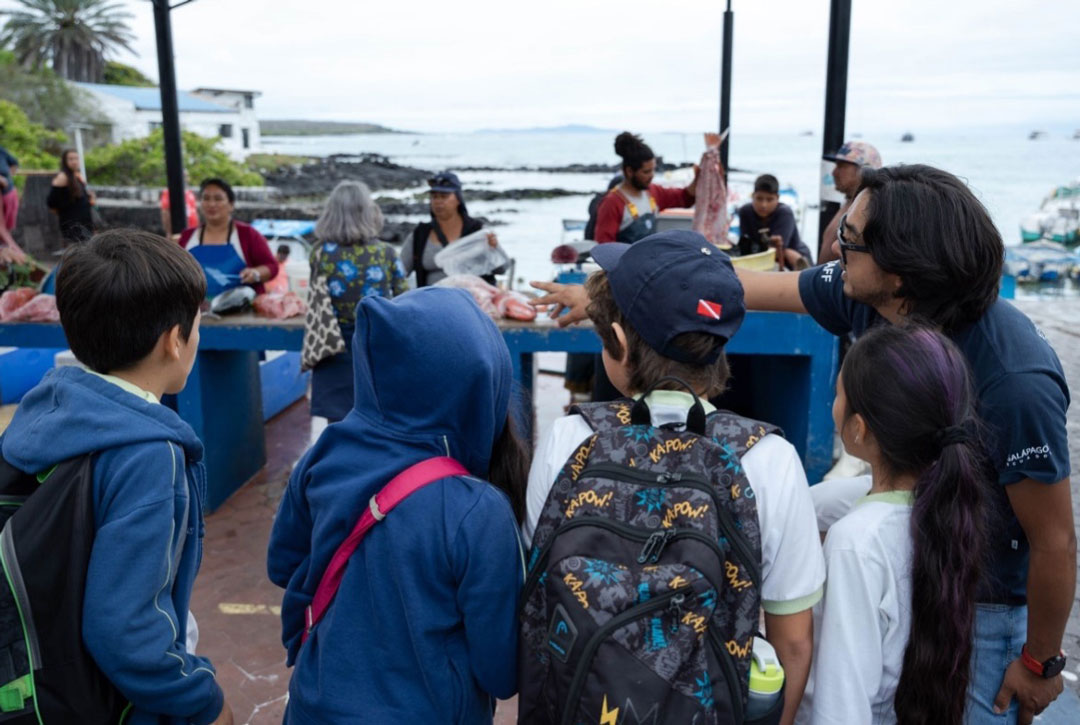An experiential journey through the sustainable fisheries value chain
How do you represent a mangrove with the body? Or a tuna, a lobster, or a scientist, among others. Children from the Tomas de Berlanga School in Santa Cruz island interpreted, through a game of charades, the different actors, elements and ecosystems that form part of the fisheries value chain in the Galapagos. Alone or in groups, they managed to construct a body image for their peers to guess.
After exploring the children’s prior knowledge of the topic, our scientists, Nicolás Moity and Solange Andrade from the CDF Interdisciplinary Fisheries Project, explained and elaborated on the role of scientific research in developing sustainable fisheries. The children understood the importance of studies of species, ecosystems and associated practices for decision-making and management of extractive activities in order to ensure that they are carried out sustainably. For example, they discovered the importance of researching the ecology of commercial species and their reproductive ages so that this information can be used by institutions such as the Directorate of the Galapagos National Park in taking management measures such as minimum sizes or closed seasons so that species can reproduce and recover their populations.

Children learning about the species and ecosystems in the development of sustainable fisheries. Photo © Juan Manuel García | Charles Darwin Foundation.
The second stop was the Directorate of the Galapagos National Park, where the children learned about some of the control and management tools used by the park rangers to monitor and ensure the application of sustainable practices in Galapagos fisheries. They learned about the ichthyometer, a tool used to verify the permitted measurements of Galapagos lobster during the commercial season.

Program Coordinator, Fernanda Loayza, teaching the ichthyometer to the children. Photo © Juan Manuel García | Charles Darwin Foundation.
At the next stop, the children were delighted with a delicious tuna caught by artisanal fishermen in the Galapagos Marine Reserve and prepared by the local chef Lucía Galarza, who also has a business of preparing smoked tuna preserved in a reusable container, thus avoiding the use of cans. In this way, they reflected on the importance of local consumption and the waste problem.
The tour culminated at the Fisherman’s Dock where, in addition to observing the different dynamics that take place between fishermen, park rangers, traders, visitors and the community, they also reflected, through a game, on the relationships and role of each of these actors, the species and the ecosystems associated with them.

Kids observe the different dynamics that take place at the market. Photo © Juan Manuel García | Charles Darwin Foundation.

The children presenting at their school's Science Fair. Photo © Sara Apolo.
A few weeks later, the children, inspired by the experiential tour, presented a project at their school’s Science Fair, through which they replicated the Galapagos smoked fish conserving system and shared the information and findings of their visit.
